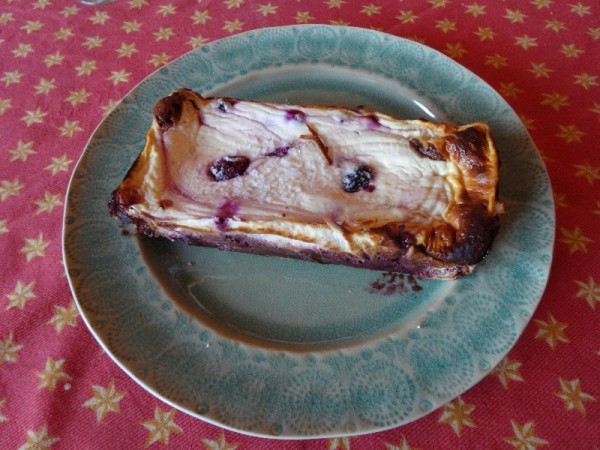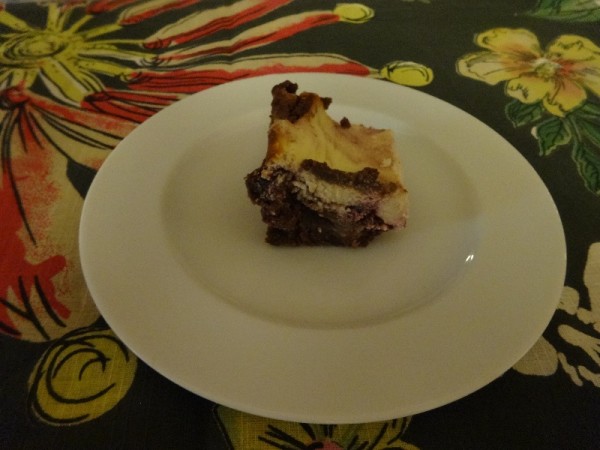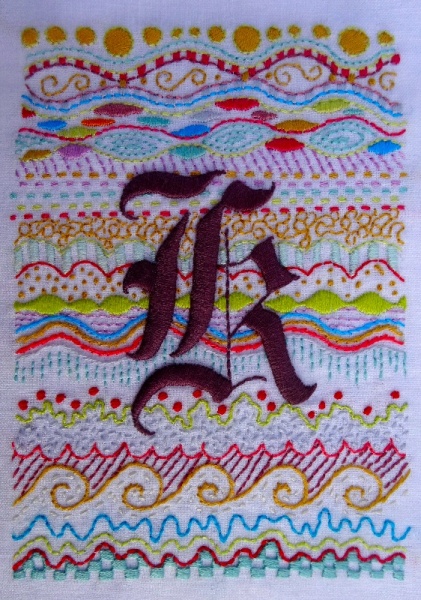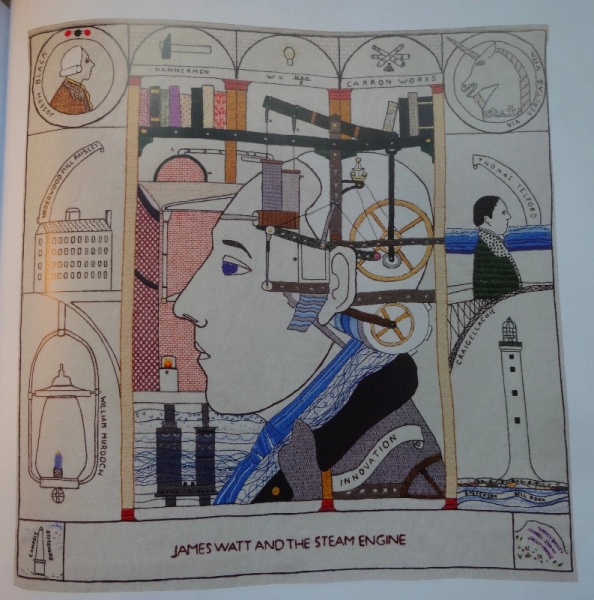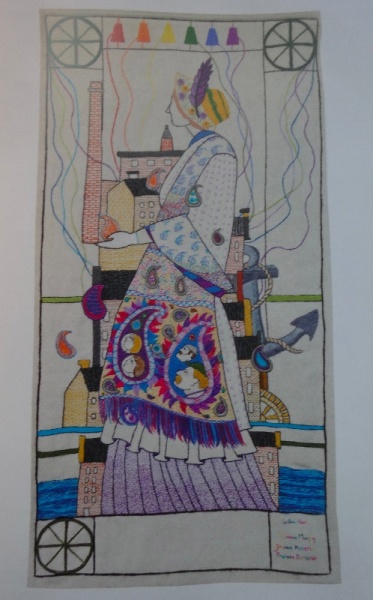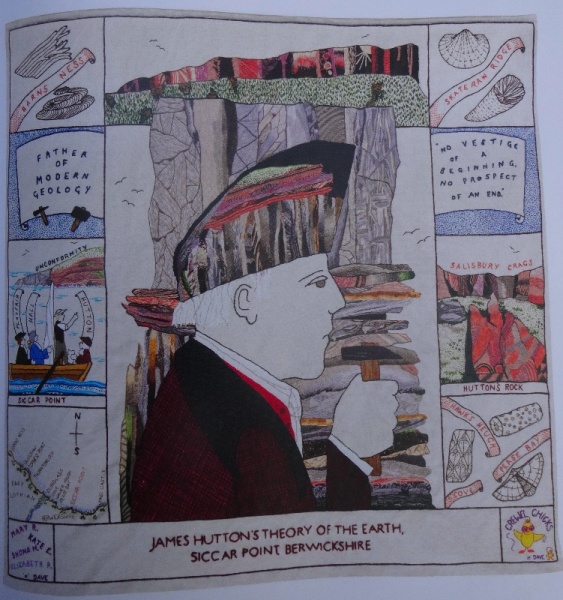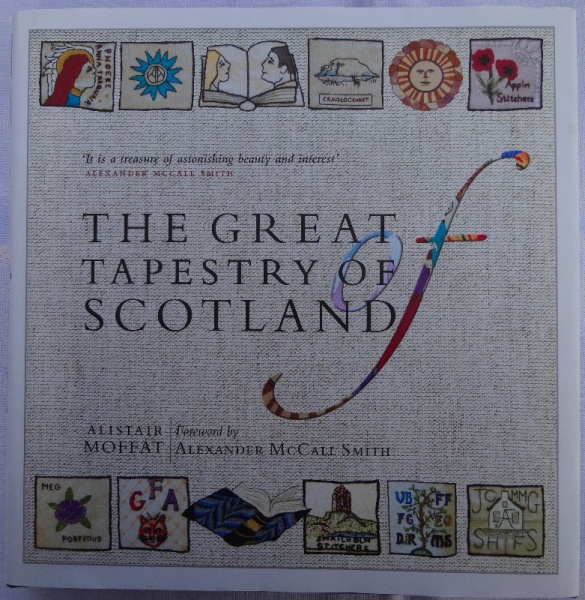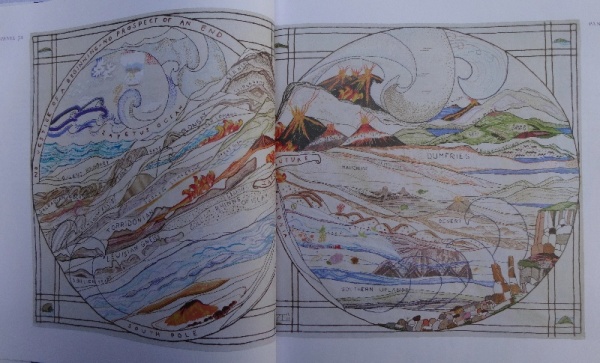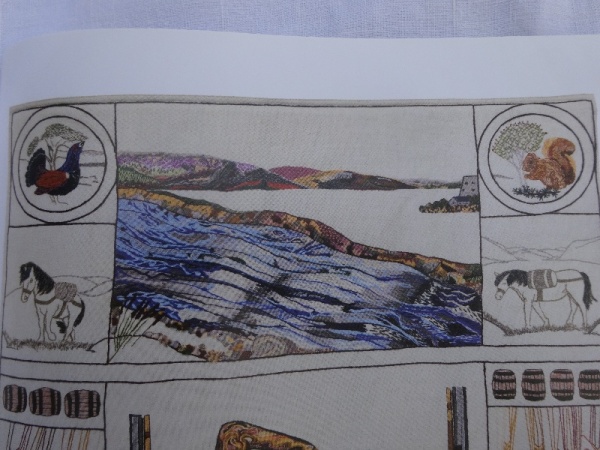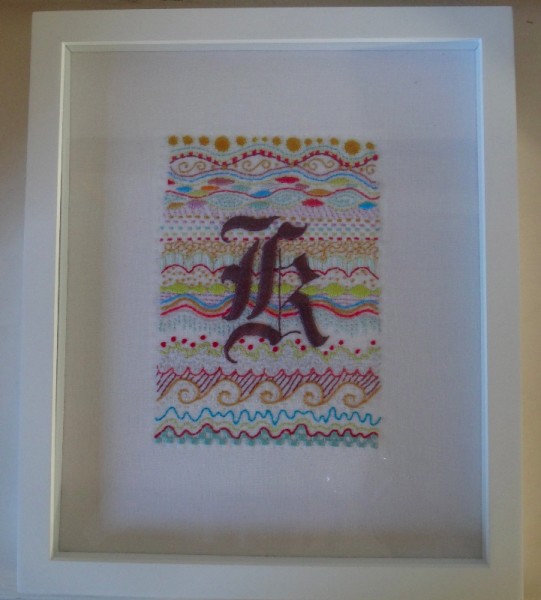A flurry of carol services and Christmas Eucharists, a head cold and the follow on cough, and a houseful of nearest and dearest – peaking at 10 to feed and bed – mean I have been unintentionally absent from this blog for a couple of weeks. I’m now pacing myself slowly hoping to be at full fitness by next week when I’m back on nanny duty again. Meanwhile here is a fabulous festive recipe.
This wonderful brownie recipe makes a particularly luscious dessert. I made it for a carol concert and it was a bit too sloppy to be eaten as a normal brownie – I should have provided little plates and spoons. Nevertheless, at least one stalwart came over and raved about how delicious it was. In fact it also freezes well and is excellent eaten ever so slightly still frozen which helps it keep its shape. However, for reasons outlined below, I think this is a recipe still in progress and I need to try it out a time or two more before I have confidence in the recipe.
Ingredients
Brownie mix
280 g unsalted butter
170g dark chocolate (70% cocoa solids)
350 g golden caster sugar
70 g wholemeal flour
tiny pinch of salt
5 medium eggs
2 teasp vanilla extract
100g white chocolate chopped small
Cheesecake mix
500 g cream cheese (I used Quark as that’s what I had)
75 g golden caster sugar
1 tsp vanilla extract
2 medium eggs
300 g fresh fruits (blackberries, raspberries, redcurrants & blackcurrants). I used frozen fruits which I defrosted, discarding the resulting liquid.
Preheat oven to 170 degrees C/gas mark 3
Grease and line a 25 x 25 cm square brownie tin
First make the brownie mixture: Melt the butter and chocolate in a bowl over a pan of simmering water (be careful that the bottom of the bowl does not make contact with the water as this could scorch the chocolate or adversely affect its texture). Gently stir the chocolate until fully melted, then remove from the heat and put on one side to cool.
In another bowl stir together the sugar, flour & salt and then pour this over the cooled chocolate and beat all together until smooth. Beat the eggs together on their own before adding them to the main mixture along with the vanilla extract and the chopped white chocolate. Mix everything until you have a glossy mixture and pour into the prepared baking tin. Now add the mixed fruits, setting aside a few whole blackberries and raspberries to scatter on top of the cheesecake mixture.
For the cheesecake mixture, whisk the cream cheese (Quark), sugar, vanilla extract and eggs until smooth and creamy. Pour this over the brownie mixture as evenly as you can and then draw a fork through the mixture to give a marbled effect. Now add the few individual fruits set aside earlier and scatter over the surface, pressing them in slightly as you go.
Bake for 40-45 minutes, checking that the brownies are beginning to set after about 30 minutes.
This recipe is based on a recipe for Chocolate and Raspberry Cheesecake Brownies in Green & Black’s Organic Ultimate Chocolate Recipes: The New Collection (ed. Micah Carr-Hill, pub. Kyle Books, 2012). The only change I made to the brownie mixture was to use brown flour instead of white. The recipe said to use a 20cm x 20cm tin but as there seemed to be too much mixture, I poured about a third of it into a small loaf tin. I then added most of my 300g punnet of fruit instead of the 170g of raspberries suggested in the recipe. When I then came to make the cheesecake mix I then used two full pots of Quark (500g instead of the 350 g required in the recipe). Green and Black’s cooking time was 35-40 minutes but my brownies took almost ten minute longer.
The introduction to Green & Black’s Organic Ultimate Chocolate Recipes: The New Collection delivers a bit of a lecture on getting the correct oven temperature. We should all apparently go out and buy an oven thermometer (and I will, I will, honestly) and then and only then should we complain if we have a problem. The trouble for me is that nowhere in the book (as far as I can see) is it stated whether the oven temperature is that for an oven with or without a fan. Possibly it’s assumed that all electric ovens now are fan ovens. However, being unsure, I decided to take 10 degrees off the suggested temperature which meant I needed to cook it for well over 45 minutes.
So, if you’re willing to experiment, give it a try. Otherwise wait until I feel I’ve got things right,


